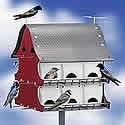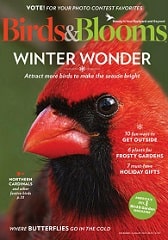Attracting Purple Martins How to Get Purple Martins to Your Yard
Introduction
Attracting Purple Martins in order to watch them as they mate up, pick nesting cavities, and raise their young will require patience and education for most "wannabe" landlords.
An understanding of their nesting habitat requirements, what type of housing, and where to place your Martin house or gourds are important factors in getting these birds to nest in your backyard.
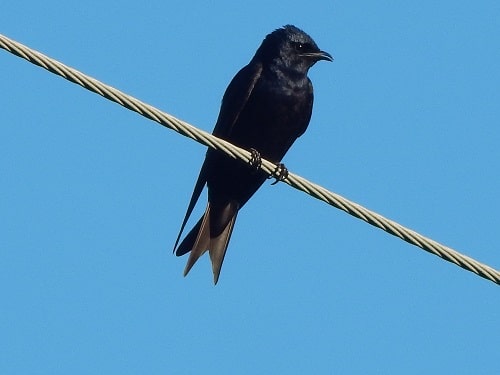
ASY Male Purple Martin
One of the most enjoyable experiences in birding for me was finally being able to attract Purple Martins to my own backyard.
It was not a simple task, as I didn't really have the best habitat. I hope the following information will help get you started on your way.
Educate Yourself on Sparrows and Starlings
If you're serious about getting Purple Martins, you'll need to get serious about Starlings and House Sparrows.
It's important that you learn all you can.
Simply placing a house up may be enough to attract wrens to your backyard but, doing the same for these birds, and expecting things to work out the same isn't going to happen.
House Sparrows and Starlings are non-native species and compete for nesting sites with other native cavity-nesting birds.
Our native species haven't had time to develop defenses against these two species, and their nests are often destroyed in attacks.
It will be your job to prevent them from nesting in whatever type of housing you intend to place.
Sorry to say, this includes Bluebirds, Tree Swallows, and Wrens. Martins are unlikely to take over housing already occupied by other birds.
Following time-tested practices will give you the best chance at hosting a colony of these birds in your backyard.
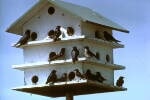
Resources to Help Attract a New Colony of Martins
Two resources I highly recommend for learning more about these birds are: Enjoying Purple Martins More by Richard Wolinski, a short booklet with a lot of helpful information.
The second resource I recommend is Stokes: Purple Martin Book by Donald & Lillian Stokes. Don't skip this part. The more information you have, the better your chances at attracting Purple Martins.
Locating Purple Martin Houses or Gourds
To attract Purple Martins, begin by locating your housing in the center of the largest open spot available, at least 30 and not more than 100 feet from human housing.
There should be no trees within 40 feet of the nesting site and preferably as far away as possible.
In the South, (probably because they are more common) you can get away with placing your houses within 25 feet of trees.
Distance from trees should be measured from the outside of branches and not from tree trunks.
The height of the house or gourd rack should be in the range of 10-15 feet, with 12 - 14 feet about average.
Don't attach wires to the house or pole. Predators can use them to get to the birds. You'll have your hands full with hawks and owls.
Nestling Purple Martin Peeking Out
Don't give up on attracting these birds simply because you have a tree around. If you've got a couple of long flyways, you may still be able to get them to nest.
My own setup is in an area most would say didn't have a chance. I have to admit; it took 4 years for me to attract martins and I worked hard at it.
Predator Protection
As you begin to attract Purple Martins to your nesting site, you'll need to take precautions to protect them from predators.
Some of the predators are raccoons, snakes, squirrels, hawks, and owls. The use of baffles on the pole can deter predators that climb.
In the South where fire ants are numerous, try keeping a ring of petroleum jelly on the pole. Don't kid yourself, snakes can climb just about anything, so wrap bird netting around the pole.
Snakes will have to be cut out of it, but you'll still have your birds. If a colony gets raided by a predator, the whole colony may relocate and never come back.
It's been said that adults are rarely attracted to new breeding sites, and while mostly true, last season's second-year unmated birds come back as adults and may start new colonies.
That's exactly how my 17-year-old colony got started. An unmated male visited several times and the following season found a female and nested in my housing.
Once you've attracted Purple Martins that nest successfully, you'll be able to attract them back and add more with time.
The first pairs have to experience nesting success or they won't return.
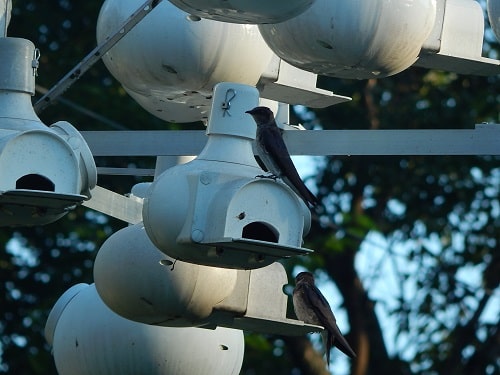
Perching on Gourds
When to Open Housing
Sub-adult martins begin arriving about 4 weeks after the first adults show up in an area.
So for new colonies, if you see adults at other established sites, you can expect the second-year birds in roughly four weeks.
As stated earlier, these were born the previous year and will start most new colonies in new housing.
Since the first-time nesters arrive later than the adult scouts, it's best to keep your houses closed until it's time for them to arrive. Otherwise, you'll be giving House Sparrows and Starlings a 4 - 8 week head start.
On the other hand, if you're serious and control Starlings and House Sparrows by trapping or shooting, you can open your housing sooner.
Sometimes old houses are damaged or people move and take their martin housing with them.
This gives everyone within a 50-mile radius a chance to start or expand their colonies. This is good for new sites.
I warn you, if you don't have the stomach for dealing with the non-native species, you'll have a more difficult time attracting these swallows.
Migration is a staggered occurrence. Birds arrive for 8-12 weeks in the north, and 16-20 weeks in the south.
The first birds to return will nest in the south. The earliest recorded arrivals were in early December in Florida.
Martins can arrive and begin nesting through the end of June throughout their range. So keep your housing ready, don't close it up or let other birds use it.
It's common for adult birds from other colonies to bring their young to other housing once the young have fledged. These visitors may choose your housing next season.
What Type of Housing Should I Use
If you haven't already purchased your housing, drive around and see what other people are doing. Offering the same type as others are using may offer an advantage.
One of the best solutions if you're unsure is to offer 1 house with 4 gourds hung below the house. Each gourd facing a different direction. North, South, East, and West.
My main advice here is if you're not successful in your first year, do not keep changing your housing type especially if you've had visitors.
I've known people that have had to wait years to get Purple Martins simply because they constantly changed their housing each season.
Returning Martins were confused by the changes every year and would not nest in the new housing.
Your hosting Purple Martins will be a better experience if your Martin housing is easy to manage.
Choose a pole that at a minimum telescopes, or better yet, is equipped with a winch or rope and pulley. Any housing should have easy access to the compartments.
An easy-to-manage system will make removing House Sparrow and Starling nests easier. You'll need to be able to monitor each nest in your housing to provide assistance in certain situations.
Easy access makes for better monitoring and even faster end-of-season cleaning.
Gourds are available both as natural gourds and commercially made plastic gourds.
I use the commercial gourds as they never rot, are easy to keep clean, and are accepted by the martins as easily as the naturals.
All of mine have tunnel entrances for extra depth and are equiped with Starling-resistant entries.
I choose to use gourds and no other type of housing (a personal preference).
Placing a handful or two of dried white pine needles, dry twigs, or straw may be helpful in attracting Purple Martins.
A supply of mud close by can be helpful to those of the species that use mud to place around the opening. Not all use mud.
When attracting Purple Martins, the color of housing should be considered. Houses and gourds should be white or a light color.
White housing seems to attract the martin birds best while reflecting sunlight. Temperature extremes can be detrimental to young birds.
In years past, the floor dimensions have been 6 inches by 6 inches, and many young have fledged from those small cavities.
It's accepted that larger cavities offer a better outcome for the birds and they seem to be preferred them over smaller housing.
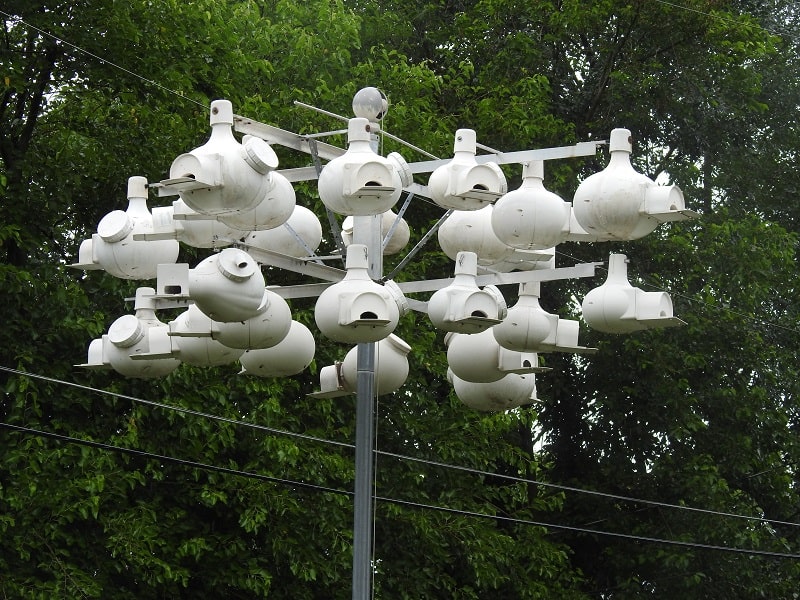
Gourd Rack with 24 Gourds
A nest cavity 6 to 7 inches wide and 8 - 13 inches deep appears to be the sweet spot. Possibly due to the fact the added depth offers better protection against a predator's reach.
A round entrance hole of 2-1/8 inches is the preferred size opening, although they will use an opening in the 1-3/4 - 2-3/8 range.
Due to Starling's competition, manufacturers are making houses and gourds with Starling-resistant entrance holes, "SREH". These may be a crescent shape or a host of other shapes.
These types of openings are highly recommended in areas with large Starling populations. This would include most cities. Some farmlands have less pressure from Starlings, but no area is free from them.
I would caution using round openings due to starlings. You'll have enough problems dealing with house sparrows.
Some people have had success attracting Purple Martins to nest at a new site by playing the Dawn song.
This CD is available from the PMCA. Played early in the morning, it's said to at least attract them to visit housing.
It may not get them to nest, but it may get them to take a look at your housing, and that's a start.
I've played mine at all times of the day when I've been outside and it does attract martins.
You should stop playing the CD when Purple Martins are around. You don't need to use it if you have a pair nesting. The birds will attract new birds.
Don't give up because others have martins and you don't. Closing too soon may keep you from ever becoming a landlord.
Keep your houses open until late August, as this year's fledglings will be searching for next year's breeding sites in late summer.
When to Close Your Purple Martin Housing
When you do close down your housing, give it a close inspection. Remove all nesting materials and scrub with a 10% bleach solution. Let it air dry before storing it for the winter.
Take care of any repairs now so you'll be ready in the spring.
If you choose to leave it out for the winter, be sure and plug the entrance hole, otherwise, House Sparrows and Starlings will begin to use it in late winter, making it a real task to get them to leave in the spring.
This is just a basic guide. Consider ordering one of the books mentioned and joining The Purple Martin Conservation Association to get the most out of being a Landlord. PMCA It's free to join the forums.
When it comes to attracting Purple Martins, one has to be willing to never give up. Some get them in a year or two and others may take twenty or more years.
You'll have to decide how much patience you have. It took me four years to attract Purple Martins and 2025 will be my 18th year hosting Purple Martins.
If you like to read about my personal colony, check this out: My Colony of Swallows
A hobby that has given me more joy than I ever expected. I wish you the best.
A Lone Purple Martin Suns on a Cold April Morning
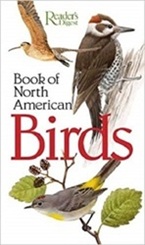
|
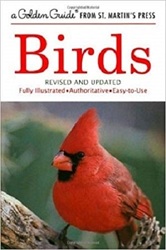
|
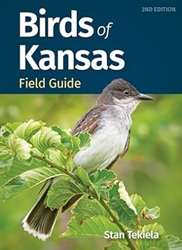
|

|
| Readers Digest Guide | Golden Guide | Your State Only | Nat-Geo Guide |
